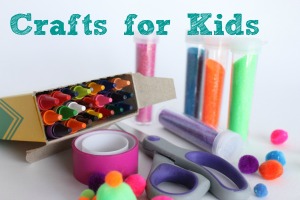
Today, parents have more choices than ever when it comes to how their kids go to school. The standard classroom isn’t the only option anymore. After the last few years of change, many families are exploring new ways to support their children’s learning.
Some children have returned to traditional classrooms. Others have stayed with online programs or tried a mix of both. The shift has made it clear that kids learn in different ways. What works for one might not work for another.
Choosing a learning format isn’t always easy. It involves looking at your child’s habits, interests, and challenges. It also means thinking about your schedule, your household setup, and your level of involvement. This article will walk you through the most common learning setups and help you figure out what fits best for your family.
Understanding the Options
The three main learning formats most parents consider are in-person, hybrid, and online school. Each one has its own structure, tools, and daily rhythm. The right choice often depends on how your child learns and what kind of support they need.
In-person learning takes place in a physical classroom with teachers and classmates. It follows a consistent schedule, offers real-time guidance, and includes face-to-face interaction. Hybrid learning is a blend of online and classroom time. Students might go to school part of the week and learn from home the rest. This format gives more flexibility but still keeps some in-person contact.
Then there’s online school. Some parents still have questions like: What is online school? This is especially if they’re new to the concept. It typically involves full-time virtual classes where students attend from home using a digital platform, often following a structured schedule. Some programs are live, with students logging in for class sessions. Others are self-paced, where kids complete assignments and lessons on their own timeline.
Online school isn’t just what kids experienced during emergency shutdowns. Today’s programs are often more structured, with teachers, grading systems, and regular assessments. Still, this setup requires focus, independence, and strong time management.
Matching Learning Styles with Formats
Children don’t all learn the same way. Some pick up ideas better when they hear them. Others do best when they see things or try them out for themselves. That’s why your child’s learning style should be part of your decision.
A child who thrives in routine might do well in a classroom. They benefit from seeing the same teacher and classmates each day. Another child might feel overwhelmed in a busy setting. They may focus better in a quiet home space, where they can move at their own speed.
If your child loves hands-on projects, they might prefer a school that offers labs, group work, or art. If they’re more independent, online options might be a better fit. Paying attention to how your child solves problems, asks questions, and stays engaged can tell you a lot.
Talk to your child about how they feel in different learning situations. Their input matters just as much as academic results.
Pros and Cons of Each Format
Choosing a learning format means looking at what each one offers—and where it might fall short. Every setup has strengths, but it also comes with trade-offs. Understanding those differences can help you make a better choice for your child.
In-person learning provides structure. Kids follow a fixed schedule, get live support from teachers, and take part in classroom discussions. They develop social skills by working with peers face-to-face. They also have access to hands-on activities, sports, and school events. However, this format can be rigid. Some students struggle with noise, large groups, or fast-paced lessons.
Hybrid learning gives students a mix of both worlds. They spend part of the week at school and part at home. This format offers more flexibility while still giving students some in-person contact. It works well for kids who like balance but need support staying on track. Parents should know that hybrid programs vary. Some have set times for logging in. Others give more freedom. Managing both sides can be tough without strong routines.
Online learning lets kids learn from anywhere. It’s often self-paced, which gives students more control over their time. This format works well for kids who focus better alone or need a quiet space. It also suits families with changing schedules or health concerns. Still, online learning can be hard without good time management. Some students feel isolated or unmotivated without face-to-face interaction. Parent involvement also plays a bigger role here, depending on the child’s age and the school’s setup.
What to Consider Before Deciding
Before picking a format, take a step back and look at your child’s daily habits. Do they need help getting started in the morning? Are they able to follow directions without reminders? Do they do better when someone is close by? These details matter more than test scores or grades.
You’ll also want to think about your family’s setup. Do you have space at home for focused work? Is there a reliable internet connection? Can someone check in on assignments during the day? Every format asks something different from parents and students. Try to be honest about what’s realistic right now.
It’s also helpful to talk to other families, look at sample schedules, or visit schools. Many programs let you sit in on an info session or speak with staff. A bit of research can save stress later on.
Involve Your Child in the Process
Kids like having a voice in decisions that affect them. Ask how they feel about different formats. Some might be excited to stay home and work independently. Others may say they miss seeing their friends or learning in person.
Let them share what they enjoy or dislike about school. You don’t have to agree with every opinion, but listening can lead to helpful insights. Involving your child also builds trust. It shows them that their learning experience matters.
It’s okay to try one format and realize it’s not the right fit. Most schools offer ways to switch if needed. The key is staying flexible and talking through challenges as they come up.
There’s no single best way for every child to learn. What works for one family may not work for another. Focus on what fits your child’s needs, your family’s routine, and what feels manageable right now. Learning can happen in many ways—as long as it supports your child’s growth and keeps them engaged.




















